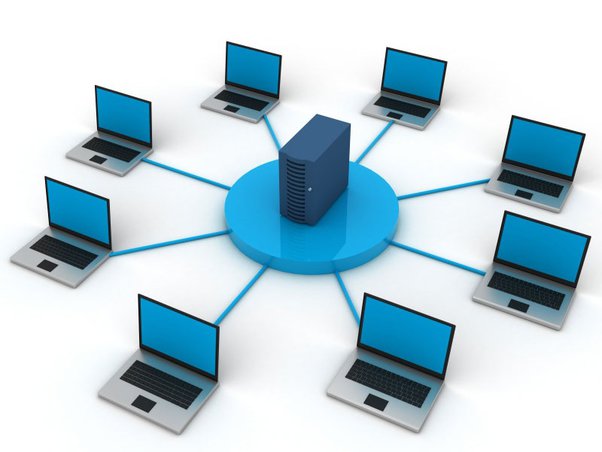In this blog post, we’ll explore some key networking concepts including the OSI and TCP/IP models, IP addressing and subnetting, VPNs and proxy servers, firewalls, routers, switches, and DNS and HTTP/HTTPS protocols.

1. OSI and TCP/IP Models: The Framework for Network Communication
The OSI (Open Systems Interconnection) model is a conceptual framework that standardises the functions of a communication system into seven layers. Each layer serves a specific role and communicates with the layers above and below it:
- Layer 1: Physical — Deals with the transmission of raw data (bits) over physical mediums like cables.
- Layer 2: Data Link — Handles error detection and correction in the data being transmitted.
- Layer 3: Network — Manages data routing between different networks.
- Layer 4: Transport — Ensures reliable data transfer, handling error recovery and flow control.
- Layer 5: Session — Manages communication sessions between devices.
- Layer 6: Presentation — Translates data formats between the network and application layers.
- Layer 7: Application — Enables applications to interact with the network (e.g., web browsers, email clients).
The TCP/IP model, though simpler, is the foundation of the modern internet. It condenses the seven OSI layers into four:
- Network Interface — Physical and Data Link layers.
- Internet — Handles IP addressing and routing (similar to OSI’s Network layer).
- Transport — Manages end-to-end communication.
- Application — Combines OSI’s session, presentation, and application layers.
Understanding these models is crucial for visualizing how data travels across networks and how different layers ensure secure and reliable communication.
Also Read : Building Your Own Ethical Hacking Lab with Virtual Box: A Step-by-Step Guide
2. IP Addressing and Subnetting: Mapping and Organizing Networks
IP addresses are unique numerical labels assigned to every device on a network, acting as an identifier that helps route data to the right location. There are two main types:
- IPv4: A 32-bit address represented as four decimal numbers (e.g., 192.168.1.1).
- IPv6: A 128-bit address designed to handle the increasing number of devices (e.g., 2001:0db8:85a3:0000:0000:8a2e:0370:7334).
Subnetting is a technique used to divide a large network into smaller, manageable sub-networks (or subnets). By breaking a network into subnets, administrators can better organize traffic, improve security, and optimize performance. Subnetting also helps conserve IP addresses by assigning only the necessary number of addresses to each subnet.
For example, in an IPv4 address like 192.168.1.0/24, the “/24” denotes that the first 24 bits of the address are used for the network part, and the remaining 8 bits are for host addresses. Subnet masks (e.g., 255.255.255.0) are used to distinguish which part of the IP address refers to the network and which refers to the host.
3. VPNs and Proxy Servers: Enhancing Security and Privacy
A Virtual Private Network (VPN) creates a secure, encrypted tunnel between your device and a remote server, protecting your data from being intercepted as it travels across the internet. VPNs are widely used for securing connections when accessing sensitive information over public Wi-Fi or bypassing geographic restrictions.
A proxy server acts as an intermediary between your device and the internet. When you send a request, it first goes through the proxy server, which forwards it to the target server. Proxies can be used to hide your IP address, access blocked content, or improve network performance by caching frequently requested content.
While VPNs offer encryption for better security, proxy servers focus more on anonymity and content filtering.
Also Read : Learn Pentesting in 5 Minutes
4. Firewalls, Routers, and Switches: Securing and Directing Traffic
A firewall acts as a security gatekeeper between internal networks and the outside world, filtering incoming and outgoing traffic based on predefined rules. Firewalls can be hardware-based (physical devices) or software-based (programs that run on computers). They are essential for preventing unauthorized access, blocking malicious traffic, and protecting sensitive data.
A router is a device that directs data packets between different networks. It determines the best path for data to travel from source to destination, making it the backbone of network traffic management.
A switch, on the other hand, operates within a single network and is responsible for forwarding data only to the intended recipient devices. Switches work at the data link layer, ensuring that data is efficiently sent to the right devices within a local network.
Together, these devices ensure that data travels securely and efficiently within and between networks.
5. DNS and HTTP/HTTPS Protocols: Translating and Securing Web Traffic
The Domain Name System (DNS) is like the phonebook of the internet. Instead of remembering numerical IP addresses, we use domain names (e.g., example.com). DNS translates these domain names into IP addresses, allowing your browser to load the correct web page.
However, when you visit a website, security is crucial. HTTP (Hypertext Transfer Protocol) is the foundation of web communication, but it lacks encryption, making it vulnerable to eavesdropping. HTTPS (HTTP Secure) adds a layer of encryption via SSL/TLS, ensuring that data transmitted between your browser and the website is secure.
Always look for the padlock icon and “HTTPS” in your browser’s address bar to ensure your connection is protected from prying eyes.
6. Intrusion Detection and Prevention Systems (IDPS):
- Function: Monitoring and analyzing network or system activities for signs of malicious activities.
- Types: Signature-based vs. Anomaly-based detection.
- Integration with Networks: Enhancing cybersecurity by detecting and preventing network-based attacks.
7. Wireless Security:
- Risks: Open networks, weak encryption, and rogue access points.
- Security Measures: WPA3 encryption, strong passphrase policies, and regular security audits.
8. Network Monitoring and Logging:
- Importance: Detecting and responding to security incidents by analyzing network activity.
- Tools: Network monitoring tools, log analyzers, and Security Information and Event Management (SIEM) systems.
Conclusion
Understanding networking fundamentals is a crucial step in building a career in cybersecurity. From learning how data travels across layers (OSI/TCP-IP models) to securing your connection through firewalls, VPNs, and HTTPS, every piece of the networking puzzle plays an important role in securing modern-day digital communication. By mastering these concepts, you’ll have the foundational knowledge to dive deeper into more advanced cyber security topics.





Your blog is a constant source of inspiration for me. Your passion for your subject matter is palpable, and it’s clear that you pour your heart and soul into every post. Keep up the incredible work!
Thank you & appreciate your support